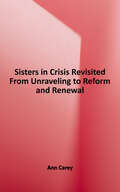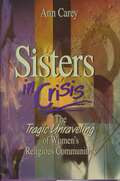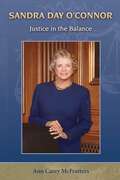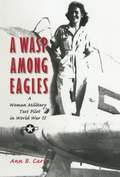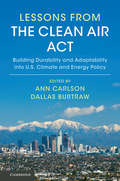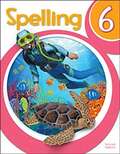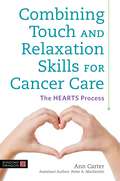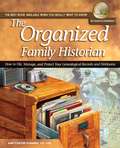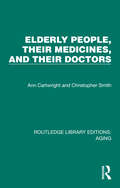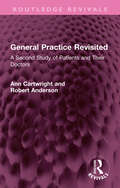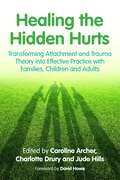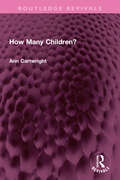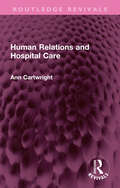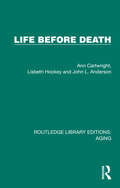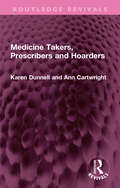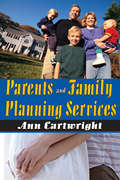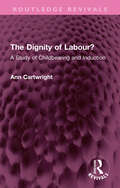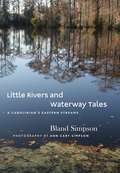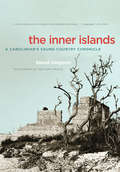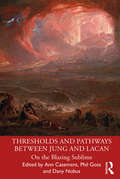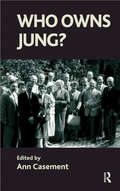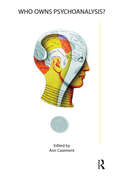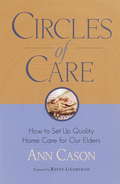- Table View
- List View
Sisters In Crisis, Revisited: From Unraveling to Reform and Renewal
by Ann CareyFifty years ago, nearly 2000 religious sisters worked in Catholic schools, hospitals, and other institutions throughout the United States. American Catholics honored these women of faith who founded and built these flourishing works of mercy. Then came the ideological shifts and moral upheavals of the 1960s, and ever since most women's orders in the United States have been in a state of crisis. Now the sisters are aging, with fewer and fewer younger women to take their place. Perhaps related to this demographic shift is the continuing doctrinal confusion that has come under the scrutiny of the Vatican. Using the archival records of the Leadership Conference of Women Religious and other prominent groups of sisters, journalist and author Ann Carey shows how feminist activists unraveled American women's religious communities from their leadership positions in national organizations and large congregations. She also explains the recent and necessary interventions by the Vatican. After examining the many forces that have contributed to the crisis, Carey reports on a promising sign of renewal in American religious life: the growing number of young women attracted to older communities that have retained their identity and newly formed, yet traditional, congregations.
Sisters in Crisis: The Tragic Unraveling of Women's Religious Communities
by Ann CareyEssays by authors, including G. K. Chesterton, Bishop Fulton J. Sheen, and Hilaire Belloc, examine the history, religious beliefs, and controversies of the American Catholic Church
Sandra Day O'Connor: Justice in the Balance (Women's Biography Series)
by Ann Carey McFeattersOn July 1, 1981, President Ronald Reagan interviewed Sandra Day O'Connor as a candidate for the United States Supreme Court. A few days later, he called her. Sandra, I'd like to announce your nomination to the Court tomorrow. Is that all right with you? Scared and wondering if this was a mistake, the little-known judge from Arizona was on her way to becoming the first woman justice and one of the most powerful women in the nation. Born in El Paso, Texas, O'Connor grew up on the Lazy B, a cattle ranch that spanned the Arizona-New Mexico border. There she learned lifelong lessons about self-reliance, hard work, and the joy of the outdoors. Ann Carey McFeatters sketches O'Connor's formative years there and at Stanford University and her inability to find a job--law firms had no interest in hiring a woman lawyer. McFeatters writes about how O'Connor juggled marriage, a career in law and politics, three sons, breast cancer, and the demands of fame.In this second volume in the Women's Biography Series, we learn how O'Connor became the Court's most important vote on such issues as abortion, affirmative action, the death penalty, the role of religion in society, and the election of a president, decisions that shaped a generation of Americans.
A Wasp Among Eagles: A Woman Military Test Pilot in World War II
by Ann CarlBefore World War II most Americans did not believe that the average woman could fly professionally, but during the war more than a thousand women pilots proved them wrong. These were the Women Airforce Service Pilots (WASPs), who served as military flyers on the home front. In March 1944 one of them, Ann Baumgartner, was assigned to the Fighter Flight Test Branch at Wright Field in Dayton, Ohio. There she would make history as the only woman to test-fly experimental planes during the war and the first woman to fly a jet. A WASP among Eagles is the first-person story of how Baumgartner learned to fly, trained as a WASP, and became one of the earliest jet-age pioneers. Flying such planes as the Curtiss A-25 Helldiver, the Lockheed P-38, and the B-29 Superfortress, she was the first woman to participate in a host of experiments, including in-air refueling and flying the first fighter equipped with a pressurized cockpit. But in evaluating the long-awaited turbojet-powered Bell YP-59A, she set a "first" record that would remain unchallenged for ten years.
Lessons from the Clean Air Act: Building Durability and Adaptability into US Climate and Energy Policy
by Dallas Burtraw Ann CarlsonClimate and energy policy needs to be durable and flexible to be successful, but these two concepts often seem to be in opposition. One venerable institution where both ideas are apparent is the Clean Air Act, first passed by the United States Congress in 1963, with amendments in 1970 and 1990. The Act is a living institution that has been hugely successful in improving the environment. It has programs that reach across the entire economy, regulating various sectors and pollutants in different ways. This illuminating book examines these successes - and failures - with the aim to offer lessons for future climate and energy policymaking in the US at the federal and state level. It provides critical information to legislators, regulators, and scholars interested in understanding environmental policymaking.
Spelling 6 Student Worktext
by Sandra Bircher Carol Arrington Ann Carruthers Kelly Payne [et al.]Building upon students' familiarity with word patterns, Spelling 6 covers the etymology of English with chapters focusing on derivational suffixes, Greek word parts, Latin prefixes, Latin suffixes, and Latin word roots. Lessons are centered on a weekly list of pattern words with built-in review words. Students will sort their pattern words under the correct letter pattern, organize words by syllables, write in the missing syllable to complete words, complete sentences, match words with their definitions, edit and proofread passages, complete writing exercises, and more. 32 weekly lists are provided. 176 pages with index and glossary, softcover. Second Edition.
Combining Touch and Relaxation Skills for Cancer Care: The HEARTS Process
by Ann CarterMassage, aromatherapy, reflexology and a variety of relaxation techniques are frequently used in hospices, supportive care settings and some hospitals. However, there are still gaps and limitations in the choices offered to patients. HEARTS (Hands-on, Empathy, Aromas, Relaxation, Textures, Sound) was devised to bridge this gap for complementary therapists, patients, carers and health care professionals. HEARTS can be used either on its own, or integrated with a conventional complementary therapy. It can also be used easily by health care workers (and carers) who are not qualified in any therapies. By discussing principles which may influence the effectiveness of touch and relaxation therapies, the book emphasises that there are 'easy' approaches that can be utilised when working with distressed and vulnerable patients.By developing an understanding of touch, aromas and the sound of the human voice, Combining Touch and Relaxation Skills for Cancer Care guides practitioners in helping their patients achieve a state of relaxation and calm as quickly and easily as possible.
The Organized Family Historian
by Ann Carter FlemingIt can take hours to research family history and it is easy to become inundated with stuff - paper records, recordings, photographs, notes, artifacts, and more information than one would imagine could ever exist. The usefulness of the collection is in the organization - using computers, archival boxes, files, and forms to help you put your hands on what you need when you need it. Also included, in this book, are instructions on the best ways to store and preserve one-of-a-kind family relics. Fifth in the National Genealogical Society's Guide series, The Organized Family Historian will follow the same user-friendly format that makes the other books helpful at any level of genealogical experience. The NGS offers readers 100 years of research and experience.
Elderly People, Their Medicines, and Their Doctors (Routledge Library Editions: Aging)
by Christopher Smith Ann CartwrightIn the late 1980s, an increasing proportion of all prescribed medicines went to people over 65 years of age, not only because they constituted a growing sector of the population but also because their consumption rate, unlike that of younger people was increasing. This increase was therefore a matter for widespread concern which had until now been largely speculative, as no recent national survey had focused on this issue.Originally published in 1988, Ann Cartwright and Christopher Smith looked at the medicines prescribed for, and taken by, a nationally representative sample of elderly people. The experiences and views of both patients (elderly people) and professionals (general practitioners) are examined and related. What is revealed is how much, and how little GPs knew about the social circumstances and medicine taking of their elderly patients. Evaluation of all the prescribed medicines taken shows the extent of elderly people’s knowledge of their medication and identifies duplications, potentially harmful interactions, contraindications, and inappropriate dosages. Recommendations for action to be taken by doctors, pharmacists, medical educators, and elderly people themselves made this book essential reading for all those concerned with the health and welfare of elderly people at the time.
General Practice Revisited: A Second Study of Patients and Their Doctors (Routledge Revivals)
by Robert Anderson Ann Cartwright‘This study of general practice and the attitudes of patients and general practitioners to it is the most significant book yet written about the NHS.’ This was how the reviewer in the ‘British Medical Journal’ reviewed Ann Cartwright’s earlier book Patients and their Doctors. In General Practice Revisited, originally published in 1981, Ann Cartwright and Robert Anderson compare the experiences and views described in the first study, carried out in 1964, with those revealed by a second survey in 1977.In the intervening period there were a great many changes in the organization of general practice. For example appointment systems and nurses working in the surgery became the rule rather than the exception, and the number of doctors working in health centres or using deputizing services rose dramatically. This study shows how the basic patient-doctor relationship has been affected by these changes. A fundamental feature of the survey is the demonstration that the attitudes and practices of patients and doctors are linked, and that it is possible to relate the experiences and degree of satisfaction of patients to the doctor’s age, sex, size of practice, equipment, ancillary help, and indeed to the doctor’s views and habits.By bringing the picture of general practice up-to-date Ann Cartwright and Robert Anderson provided the basic data for any discussion of primary health care in this country at the time.
Healing the Hidden Hurts: Transforming Attachment and Trauma Theory into Effective Practice with Families, Children and Adults
by David Howe Caroline Archer Christine Gordon Helen O'Shea Hannah Fryer Victoria Drury Tamara Gordon Jonny Matthew Helen Jury Marie Martin Kate Mcinnes Charlotte Drury Tricia Skuse Jude Hills Lisa Waycott Viv Norris Ann Cartwright Emma Birch Claire Carbiss Elaine Simpson Jane MacnamaraHealing the Hidden Hurts: Transforming Attachment and Trauma Theory into Effective Practice with Families, Children and Adults provides a unique collection of professional and personal responses to the challenges that arise in dealing with attachment difficulties. With contributions from social workers, adoptive parents, adoptees, psychologists, therapists, counsellors and other related professionals, this book provides a varied and expansive approach to explaining attachment theory. The authors speak from personal experience to deliver explanations of theory, how they relate to practice and to provide practical guidance on how to improve the physical, emotional and psychological development of children in care across a broad range of professional settings. This book provides valuable insights relevant to practitioners within the fields of social work, health, education, the criminal justice system and any independent and voluntary sectors working with children and families.
How Many Children? (Routledge Revivals)
by Ann CartwrightAnn Cartwright’s book Parents and Family Planning Services (1970) had become a classic in its field.Originally published in 1976, How Many Children? Dr Cartwright’s study of family size and spacing in England and Wales in 1973 is again based on detailed research and analysis, and upon interviews with the mothers and fathers of a random sample of legitimate births in England and Wales.Ann Cartwright discusses the extent to which people have firm intentions about their family structure and the factors which may affect these intentions – work, housing, economic situation, marital relationships and family roles. She describes the part played by contraception, abortion and birth control services in people’s achievement of their intentions.A major interest of the study is in changes over time. It attempts to throw some light on the falling birth rate and the relative contributions to this decline of desires for smaller families, different spacing patterns and the use of more effective methods of birth control. Comparisons are made with the earlier study, Parents and Family Planning Services, and a fascinating conundrum emerges: in the later study, parents were using more effective methods of birth control but the proportion of unintended pregnancies had not declined. Possible explanations for this are discussed.
Human Relations and Hospital Care (Routledge Revivals)
by Ann CartwrightOriginally published in 1964, this book describes the hospital service as it is seen by patients. It is based mainly on interviews with a random sample of patients and discusses the relationships between patients and between them and hospital doctors, nurses, and general practitioners. The best available medical care should not only be given, but the patient and his relatives should feel that this has been given. Explanations need to be seen not as a lavish appendage, but as an integral part of medical care. Recognition and acceptance of this responsibility could stimulate interest in patients' social lives, so that hospital staff become more aware of the difficulties patients may encounter when they leave hospital. This in turn could lead to greater integration between the hospital and welfare services and between the hospital and the general practitioners. Still relevant today this study can now be read in its historical context.
Life Before Death (Routledge Library Editions: Aging)
by Ann Cartwright John L. Anderson Lisbeth HockeySince death is an experience which will inevitably be common to us all, we are often surprisingly uninterested in what services are provided for those people, often the elderly and infirm, who are at risk or who are on the point of death. Originally published in 1973, this study describes the last twelve months in the lives of 785 adults. Based mainly on the reports of close relatives, it is concerned with the needs of the dying and the care they receive. This includes the more emotional aspects such as ‘awareness’ of dying and the effects of the death on relatives. The book looks at the part played by hospitals, general practitioners, local authority health and welfare services, and by relatives, friends and neighbours. The views of those who provide these services are also considered. The picture that emerges shows up the gaps in the care that was given to people in the final year of their lives at the time.
Medicine Takers, Prescribers and Hoarders (Routledge Revivals)
by Ann Cartwright Karen DunnellIn the early 1970s, the consumption of both prescribed and non-prescribed medicines in Britain was increasing. Originally published in 1972, this book takes a look at the medicine takers and the types of medicine they take. It examines the relationship between self-medication and prescription, and describes the frequency and nature of repeat prescribing. The medicines kept in a random sample of households were counted and analysed, and data about the length of time people hoarded medicines is used as a basis for estimating the proportion of prescribed medicines that are wasted.By putting the views and habits of people as patients alongside information from their general practitioners the study illuminates the relationship between patients and doctors. In addition, variations between people in different social classes direct light on the distribution of care and the equity of services at the time
Parents and Family Planning Services
by Ann CartwrightParents and Family Planning Services focuses on parents of a sample of newborns in twelve areas of England and Wales during the 1970s. The parents were asked about their contraceptive practices, attitudes toward different methods of birth control, and opinions of-and experience with-different types of services. General practitioners, health visitors, and doctors at family planning clinics were interviewed about their views and practices. This juxtaposition of the attitudes of parents and professionals highlights the reasons why people do not use effective methods of birth control, and leads to suggestions as to how they could be helped to do so. Several chapters discuss fathers' attitudes and actions, the views of parents and professionals, and the influence of religion, social class, education, and geographic location. The final chapter is concerned with possible changes in contraceptive habits, and the ways in which services can develop to help more women avoid unwanted pregnancies. The work has ongoing policy implications, and also indicates how attitudes and change evolve over time. Parents and Family Planning Services is predicated on the assumption that unwanted fertility is to be avoided. It underscores the need for a proliferation of different sorts of services: more clinics, an increase in the help and advice given at hospitals, the development of a supportive and integrated home service. This volume is a significant contribution to the literature in this vital field. It remains essential reading for both professionals and concerned policy personnel, particularly those interested in the evolution of policy and practice.
The Dignity of Labour?: A Study of Childbearing and Induction (Routledge Revivals)
by Ann CartwrightOriginally published in 1979, this study looks at the experience of childbearing from three viewpoints: first and foremost from that of the childbearing women; but in addition it considers the views and experiences of midwives and consultant obstetricians.It examines the proportion of induced labours and questions who is induced, when, where and why and how. Comparisons are then made between induced and non-induced labours of mothers’ experiences of labour and delivery and then of the babies conditions and the early relationships between the mothers and babies. Women’s views of their experiences, their attitudes to the information they were given, and their choice for treatment at further pregnancies are then examined.In the final chapter induction policies and practices are reviewed in the light of women’s reactions to their experiences. The implications of the findings are discussed in relation to other innovatory and interventionist procedures and in the context of the women’s movement.
Little Rivers and Waterway Tales
by Bland Simpson Ann Cary SimpsonBland Simpson regales us with new tales of coastal North Carolina's "water-loving land," revealing how its creeks, streams, and rivers shape the region's geography as well as its culture. Drawing on deep family ties and coastal travels, Simpson and wife and collaborator Ann Cary Simpson tell the stories of those who have lived and worked in this country, chronicling both a distinct environment and a way of life. Whether rhapsodizing about learning to sail on the Pasquotank River or eating oysters on Ocracoke, he introduces readers to the people and communities along the watery web of myriad "little rivers" that define North Carolina's sound country as it meets the Atlantic.With nearly sixty of Ann Simpson's photographs, Little Rivers joins the Simpsons' two previous works, Into the Sound Country and The Inner Islands, in offering a rich narrative and visual document of eastern North Carolina's particular beauty. Urging readers to take note of the poetry in "every rivulet and rill, every creek, crick, branch, run, stream, prong, fork, river, pocosin, swamp, basin, estuary, cove, bay, and sound," the Simpsons show how the coastal plain's river systems are in many ways the region's heart and soul.
The Inner Islands
by Bland Simpson Ann Cary SimpsonBlending history, oral history, autobiography, and travel narrative, Bland Simpson explores the islands that lie in the sounds, rivers, and swamps of North Carolina's inner coast. In each of the fifteen chapters in the book, Simpson covers a single island or group of islands, many of which, were it not for the buffering Outer Banks, would be lost to the ebbs and flows of the Atlantic. Instead they are home to unique plant and animal species and well-established hardwood forests, and many retain vestiges of an earlier human history.
How to Grow Herbs in the Midwest (3rd Edition)
by Ann CaseA small guide to growing some of the more common herbs in the tricky climate of mixed zone 5 & 6.
Thresholds and Pathways Between Jung and Lacan: On the Blazing Sublime
by Phil Goss Ann Casement Dany NobusThis groundbreaking book was seeded by the first-ever joint Jung–Lacan conference on the notion of the sublime held at Cambridge, England, against the backdrop of the 100th anniversary of the outbreak of the Great War. It provides a fascinating range of in-depth psychological perspectives on aspects of creativity and destruction inherent in the monstrous, awe-inspiring sublime. The chapters include some of the outcrop of academic and clinical papers given at this conference, with the addition of new contributions that explore similarities and differences between Jungian and Lacanian thinking on key topics such as language and linguistics, literature, religion, self and subject, science, mathematics and philosophy. The overall objective of this vitalizing volume is the development and dissemination of new ideas that will be of interest to practising psychoanalysts, psychotherapists and academics in the field, as well as to all those who are captivated by the still-revolutionary thinking of Jung and Lacan.
Who Owns Jung?
by Ann CasementThis book has a similar, though not identical, format to Who Owns Psychoanalysis? in being divided into sections as follows: academic, clinical, history, philosophy, science. Who Owns Jung aims to be a celebration of the diversity and interdisciplinary thinking that is a feature of the international Jungian community. Many of the contributors are practising analysts and members of the International Association for Analytical Psychology; others are scolars of Jung whose work has been influential in disseminating his ideas in the academy, though it is worth noting that a number of the analysts also work in academe.Contributors:James Asto; Astrid Berg; Joe Cambray; Ann Casement; Andrea Cone-Farran; Roberto Gambin; Wolfgang Giegerich; Joseph Henderson; George B. Hogenson; Mario Jacoby; Hayao Kawai; Toshio Kawai; Thomas B. Kirsch; Jean Knox; Roderick Main; Denise Gimenez Ramos; Sonu Shamdasani; Michael Sinason; Hester McFarland Solomon; David Tacey; and Margaret Wilkinson.
Who Owns Psychoanalysis?
by Ann CasementSo who does own psychoanalysis? Equally pertinent, what is psychoanalysis? Even before the death of Sigmund Freud, psychoanalysis was splintering into different groups, each convinced of their superiority to the other. There was little co-operation between them plus a great deal of resentment, recrimination and suspicion. The status quo has been evolving slowly in recent years, with increased tolerance and communication between the different factions, leading to the birth of this book.The result is an international and inter-group collaboration of eminent psychoanalysts and scholars of psychoanalysis discussing and reflecting on the meaning psychoanalysis holds for them. Their contributions have been grouped into four sections: academic, historical, political and scientific. Each paper is varied in its subject matter, looking at such issues as psychoanalytic ownership, the genealogy of the word "psychotherapy", historical perspectives on the situation, whether there can be a monopoly on psychoanalysis, and the role of the brain in relation to the mind, and has been grouped according to its main theme.
Circles of Care
by Ann Cason"Written from within the experience of caregiving, Circles of Care recognizes that no one person can handle the strain of caregiving alone, giving many fine suggestions on dealing with the irritation, frustration, and fatigue that inevitably arise. It describes the opportunity that caregivers have to know their subjects intimately and creatively, focusing not on weakness but on strength and on making constructive use of the interests and abilities still available in order to channel the tremendous energy that often remains after nearly everything else is gone."
Circles of Care
by Ann Cason"My parent needs help, but refuses to consider a nursing home. " That's the dilemma facing millions of baby boomers today. How can we ensure responsible, compassionate, even uplifting care for our aging parents at home? Mindfulness is key, Ann Cason writes. Good care begins with watching and listening, with entering the elder's world and accepting it. Drawing on decades of experience in caring for the elderly, Cason helps us understand how old age feels and how we can help. Then, through exercises, care studies, and numerous examples and suggestions, Circles of Care shows how to: * Work out a plan of care * Assemble and foster a caregiving team * Create an uplifting daily routine--and vary it creatively * Plan nutrition, medical needs, finances, and outings * Improve the elder's personal care and physical environment * Ease conflicts between elders and their caregivers or families * Avoid caregiver burnout * Work with mood swings, confusion, and memory loss
